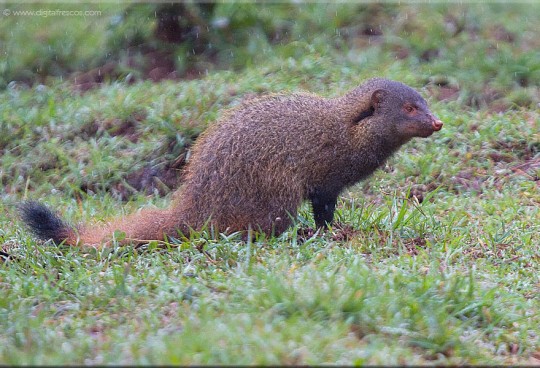The desert monitor lizard, Varanus griseus koniecznyi. Varanus griseus monitor lizards normally display a variety of body coloration from light brown and yellow to grey. They average about one meter in length, but can reach total body lengths of almost two meters. These lizards can also have horizontal bands on either their backs or tails, along with yellow spots across their backs. Their young are normally a brightly colored orange and have distinctive bands across their backs which may be lost as they mature. Their nostrils are slits located farther back on their snouts (closer to the eyes than the nose), and their overall body size is dependent on the available food supply, the time of year, environmental climate, and reproductive state. Males are generally larger and more robust than females, but females have a more gentle look about them.
The V. g. koniecznyi subspecies (Indian desert monitor) has three to five bands on its back, 13-19 bands on its tail, a plain tail tip, 108-139 rows of scales on its midsection, and a broader and flatter head when compared to the other subspecies. It is mainly found in Pakistan and India, and has the smallest body of the three subspecies. They have been reported to possibly not go through the normal hibernation period over the winter, but are still inactive and do not feed between December and March. Their normal diets consist mainly of invertebrates, but can also branch out to other lizards and small mammals.
![]()






Sorry, the comment form is closed at this time.